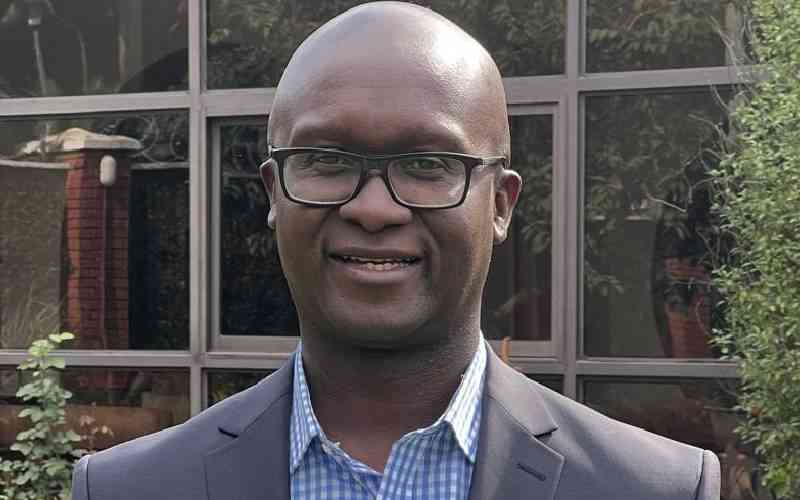NAIROBI: Last week, I announced a tender for a major redevelopment of existing housing estates. This will see estates grow with over 100,000 new housing units, accommodating some 650,000 residents, and then the renovation of existing homes currently on those estates.
No current residents will need to move from where they live while construction takes place.
While I realise those currently living in the areas we will be redeveloping will experience some discomfort while construction occurs, it is essential, and not without potential rewards in the future.
Current residents will be able to buy or rent a new unit when they are built at a concessionary rate, which will improve their quality of living immeasurably.
Through the simple laws of supply and demand, more mortgage products are coming onto the market and, with an major infusion of new housing stock, this market will be able to develop well beyond the 24,000 mortgages there are currently in Nairobi today.
Those who cannot afford a mortgage today will be able to do so tomorrow, thanks to new products and offerings. But this won't happen without significant levels of new housing stock to buy in the first place.
Of all the things we need to improve in Nairobi – and after decades of underdevelopment and mismanagement this list is very long indeed–housing must come near the top of the list. If we don't act now then the living conditions of millions of Nairobians will worsen over the next few years.
Just look at the statistics: within our city barely 35,000 new homes are constructed each year, when 120,000 is the annual number we need.
This is because over 100,000 new Kenyans flock to our city in search of employment and opportunity every 12 months.
We already have, by some estimates, nearly seven persons living per room in some parts of our county.
The old saying goes that "home is where the heart is" but with such levels of overcrowding I doubt all Nairobians would agree. When the total population of Nairobi is expected to expand to 14 million by 2050 and to 27 million by the end of this century, we cannot stand idle while our housing levels turn from overcrowded to crisis.
Now many Nairobians must be thinking – where's the catch? Where is the money going to come from and how can we be sure it won't be grabbed? We will use "Public-Private-Partnerships" or "PPPs" to bring in funding from the private sector.
In order to ensure those who have the skills, but too often not the opportunity to tender for projects such as this, so we will provide special consideration for Women and Youth-owned companies to apply.
Our new electronic public tendering process that is open and easily available for all to see and follow will underpin the transparency of tenders.
Stay informed. Subscribe to our newsletter
The digitisation of applications and payments – implemented under my Governorship – has already streamlined operations and reduced graft in parking and payment rates while raising collections for City Hall.
But just building homes fit for hardworking Kenyans is not enough, of course.
These houses and flats must be connected to road and rail networks, and be completed with modern drainage – critical for growth of our city - as the recent floods have shown. All of these items are part of my Master Plan for Urban Development, the first and only development plan our city has had since 1948: some 67 years ago.
There are many reasons why our city has been woefully underdeveloped in the last half-century (indeed corruption must come near the top) but the simple fact is, without a plan, investors and donors have had no strategy to invest in.
Already elements of my Master Plan are underway. I have been working with the Ministry of Transport to bring forward the opening of the Southern by-pass by over six months.
The roundabouts on Mombasa Road and Uhuru Highway will soon be fully signalised with intersections that will unblock a vital artery to our city.
 The Standard Group Plc is a
multi-media organization with investments in media platforms spanning newspaper
print operations, television, radio broadcasting, digital and online services. The
Standard Group is recognized as a leading multi-media house in Kenya with a key
influence in matters of national and international interest.
The Standard Group Plc is a
multi-media organization with investments in media platforms spanning newspaper
print operations, television, radio broadcasting, digital and online services. The
Standard Group is recognized as a leading multi-media house in Kenya with a key
influence in matters of national and international interest.
 The Standard Group Plc is a
multi-media organization with investments in media platforms spanning newspaper
print operations, television, radio broadcasting, digital and online services. The
Standard Group is recognized as a leading multi-media house in Kenya with a key
influence in matters of national and international interest.
The Standard Group Plc is a
multi-media organization with investments in media platforms spanning newspaper
print operations, television, radio broadcasting, digital and online services. The
Standard Group is recognized as a leading multi-media house in Kenya with a key
influence in matters of national and international interest.






